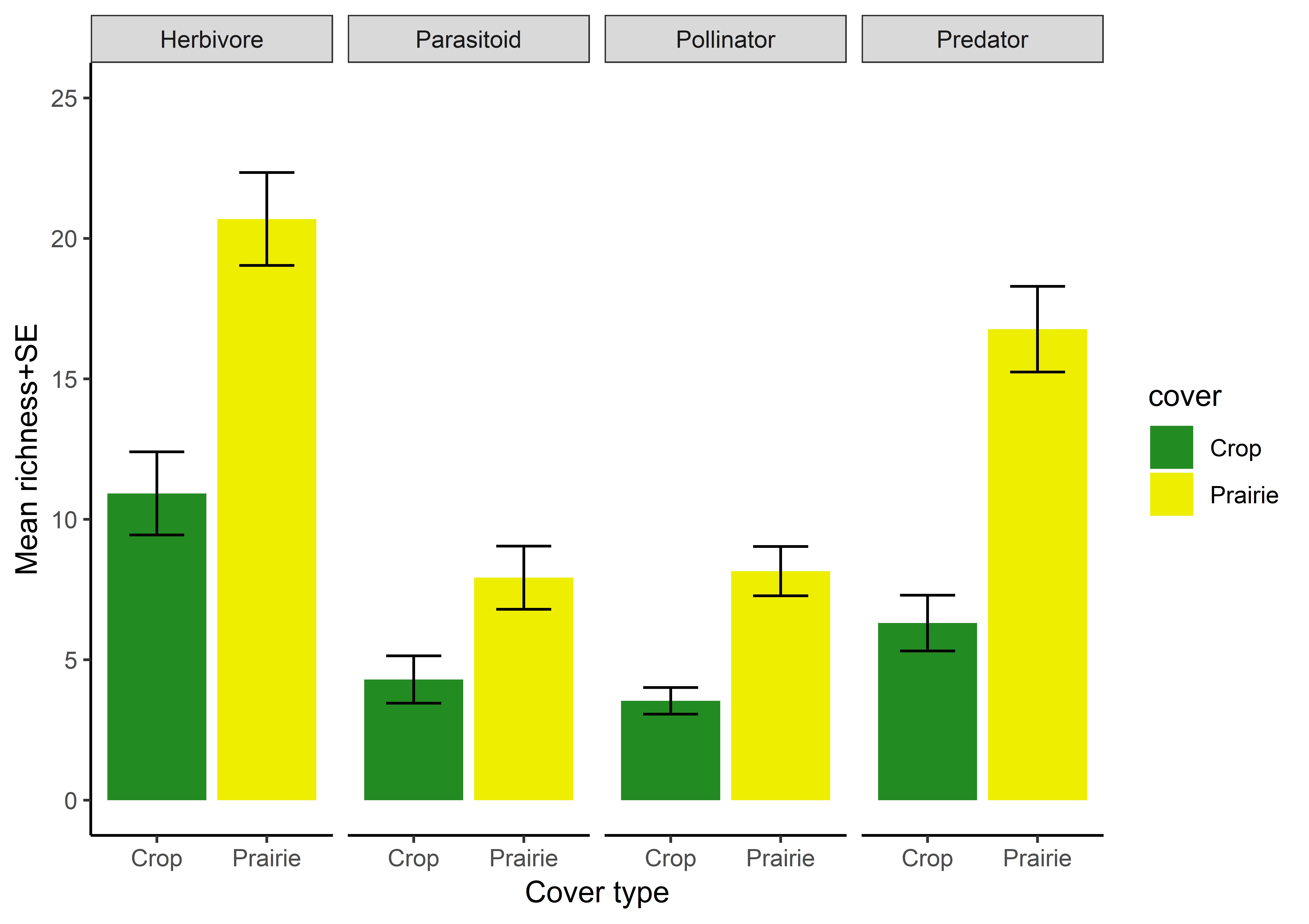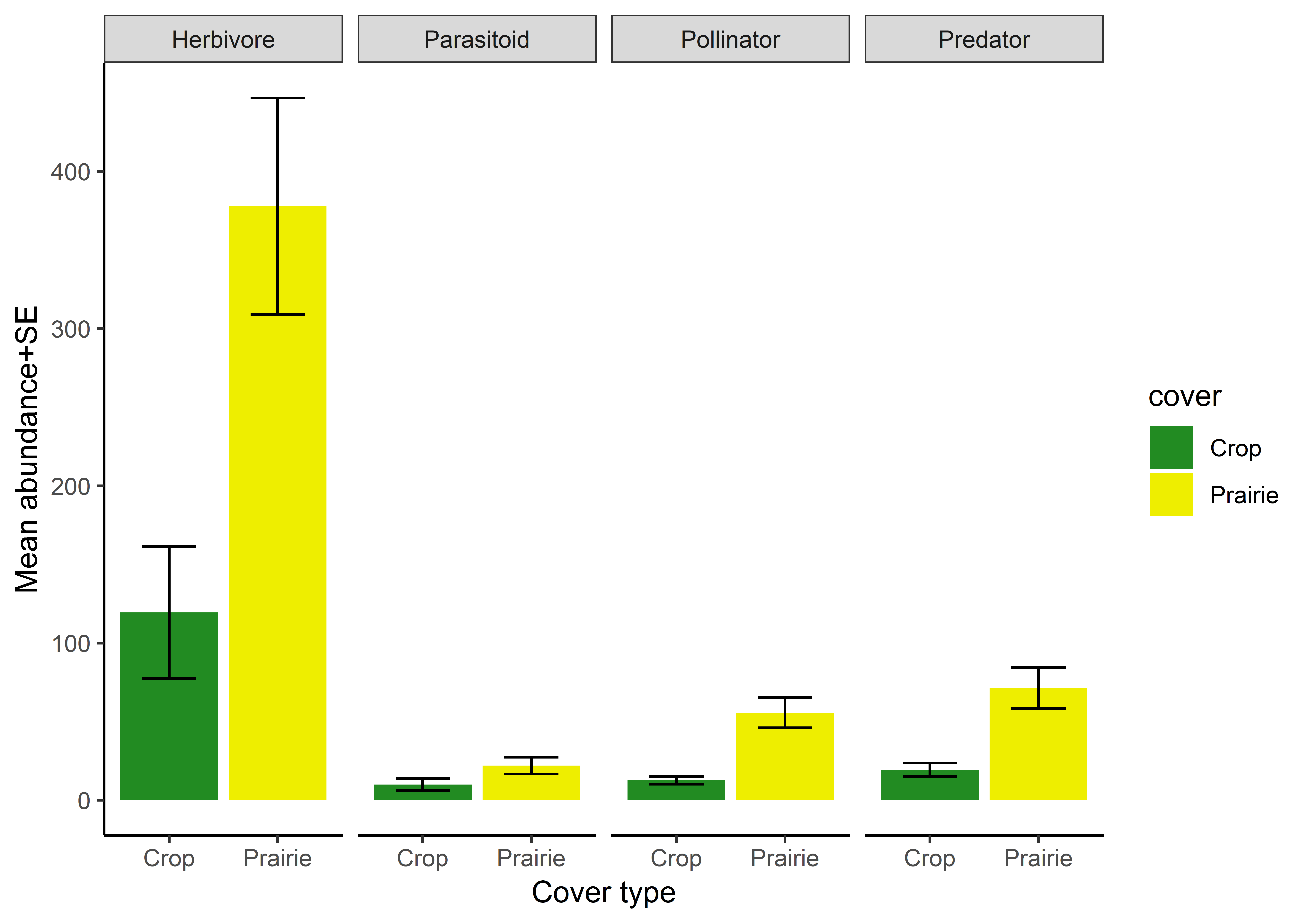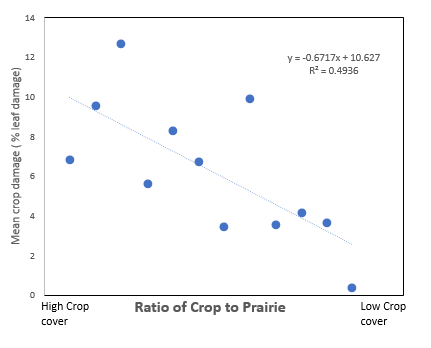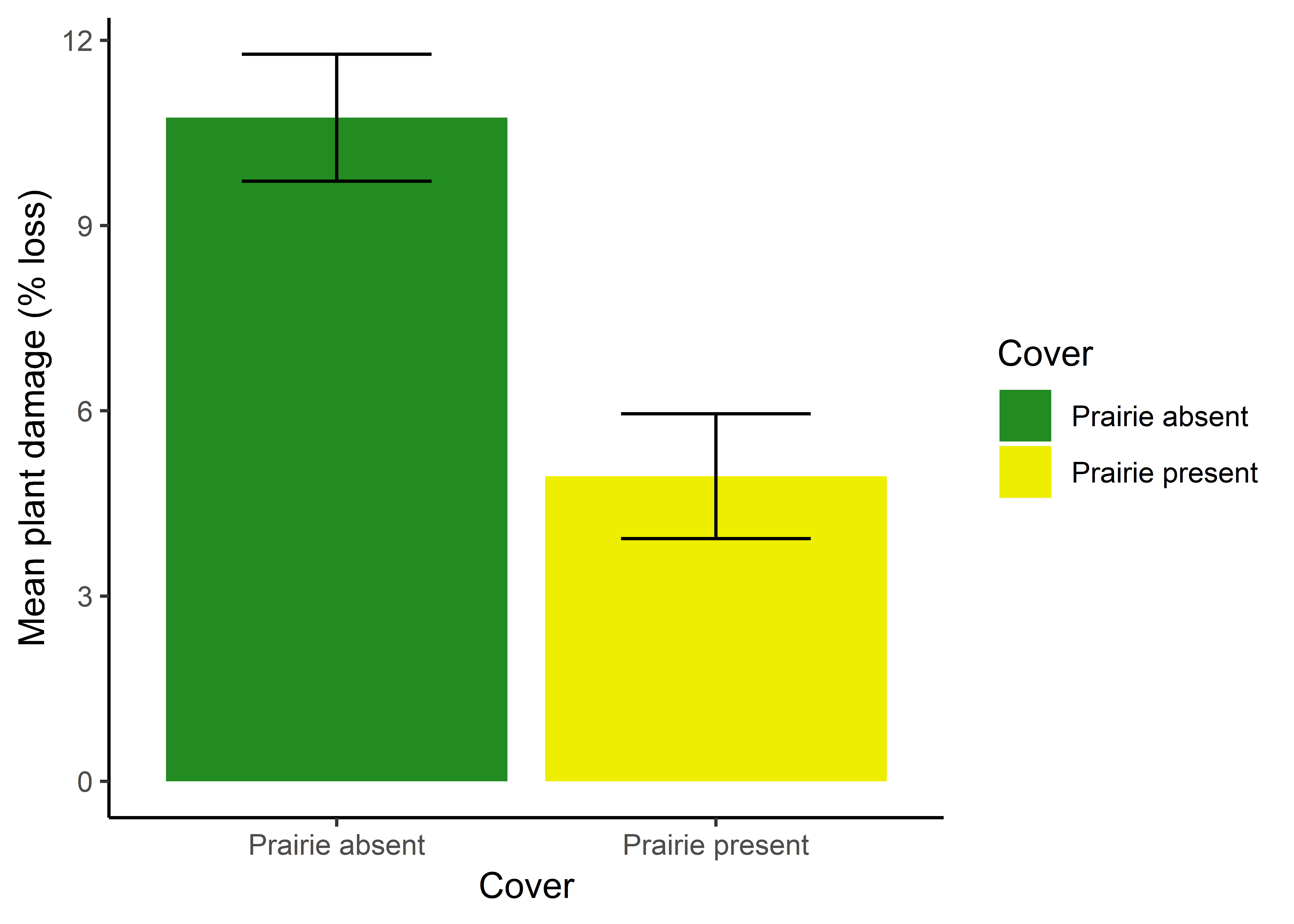Landscape heterogeneity strongly influences the dynamics of beneficial insects as well as herbivore functional groups on agricultural landscapes, which ultimately affect crop yield. Previous studies on how landscapes surrounding farms affect insect herbivores and crop damage have been laser-focused on one pest at a time. This is helpful with management strategies for the one taxa but farms are interconnected with many trophic levels and many herbivores interacting at one time. By considering multiple insect functional groups, our study design represents a more realistic situation for what farm landscapes experience.
By considering the collective effect of multiple functional groups on farms, management schemes need to consider joint effects of functional groups to be effective. Still, more detailed studies about semi-natural structure are needed to better understand these dynamics. There are studies that find the presence of prairie can have an overall positive effect on crop production and beneficial insect abundance, but in others, they can have a negative effect, and this could be due to the characteristics of farm management and characteristics of insect fauna that live in those areas.
Past thinking has been on tactics to quickly suppress herbivores and reduce crop damage, rather than on why agroecosystems are vulnerable, how to make them more herbivore-resilient, and what increases the arthropods that create ecosystem services (natural enemies of pests and pollinators). Agroecosystem redesign through precision agriculture involves a shift from linear, one-to-one relationships between target functional groups to webs of relationships between insect functional groups, associated with landscape and agroecosystems diversification schemes.
The study
In my study, we look at 12 corn/soy rotation farms across southern Ontario. The bottom-up relationship between prairie grassland plant communities and effect on insect functional groups was assessed by surveying these 12 conventional, working farms which possessed a natural gradient of plant diversity within southern Ontario.
The prairie seed mix of these farms was largely composed of these big three C4 grasses:
- Big bluestem, Indian Grass, and Switchgrass
Wildflowers varied at each site, but generally contained a mix of the following:
- Swamp Milkweed, Sneezeweed, Sweet Ox-eye, Great St. Johns-wort, Great Lobelia, Monkey Flower, Wild Bergamot, Evening Primrose, Foxglove Beardtongue, Hairy Beardtongue, Obedient Plant, Virginia Mountain Mint, Black-eyed Susan, Green-headed Coneflower, Blue Vervain, Showy-Tick Trefoil, Butterfly Milkweed, Brown-eyed Susan, Grey-headed Coneflower, Round-headed Bushclover
There is a requirement for agri-environment schemes to simultaneously deliver multiple benefits to natural communities. There is growing evidence that increases in plant diversity can deliver a range of benefits, such as amount and stability of production, soil quality and diversity of higher trophic levels and ecosystem services (ecosystem processes that benefit society) such as herbivore suppression. The cascading impact of increasing conventional grassland plant diversity on agricultural lands to benefit arthropod abundance and provide ecosystem services is the focus of this study.
One part of the study examined effects of semi-natural areas (prairies) on 4 agriculturally important functional groups: pollinators, predators, parasitoids, and herbivores. The other part of the study was to asses if the presence of prairies would decrease crop damage. We measured plant damage by percent observed loss. Other plant data were collected such as biomass, photosynthetically active radiation and other vegetative factors like percent species composition in each of our study quadrants.
Results
I expected that the abundance and richness and activity of beneficial arthropods will be greatest in prairie margins, and lowest in conventional row crops. We found that this was true, but also that herbivores followed this result. We see that there are way more herbivores in the prairies than the crop which is great because it is acting as a way to “trap” them and eat the vegetation found there rather than the crop.


I expected that landscapes with a higher proportion of cropland to prairie area would lead to greater crop damage. We found that lower crop damage and, interestingly, number of herbivores, was best explained by the presence of non-crop habitats, such as prairies, in the landscape. Specifically, when the proportion of prairie on farms was high, the amount of plant damage in crops was lower, likely because of increased parasitism from natural enemies that could be fostered by the added resources from the species-rich prairie. The finding suggests that while beneficial insects increased as a result of non-crop habitats, so did the number of herbivores.


Conclusion
Agricultural systems are engineered by humans; if we truly understand how they are assembled and how they function they could be manipulated to support the biodiversity that contributes to sustainable ecosystem services. The work presented here demonstrates that even small habitat enhancements to land heterogeneity such as the addition of tallgrass prairie can improve insect populations and ecosystem services (such as herbivore suppression and pollination) across the landscape.

